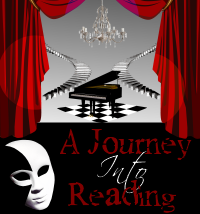 |
| Photo taken by Stephen Rothfeld, courtesy of Simon & Schuster |
Today, I am handing over the reigns of my blog to author Elle Newmark.
Elle is an award-winning writer whose books are inspired by her travels.
Today she talks about the inspiration in writing her book The Sandalwood Tree, that is expected to be published April 2011 by Simon & Schuster.
Epiphany in Old Delhi
In Old Delhi, where the streets are too narrow for cars, my husband and I climbed into a bicycle rickshaw and then bumped along alleys packed, shoulder-to-shoulder with shoppers dressed in a rainbow of turbans and veils. The lanes were packed full of tiny shops open to the street and spilling over with color and sparkle. There is so much glitter in an Indian bazaar I got the feeling that if I dropped a leg of lamb it would come up with gems stuck all over it like a meaty scepter.
The air smelled like dung fires, boiling oil, curry, and incense, and the women, in their brilliant saris, looked like tropical birds fluttering through veils of dust. I held on tight while the rickshaw bucked and rumbled down Silk Street, Paper Street, Bird Street, Tassel street, Shoe Street, Barber Street, Samosa Street...you get the idea. I was the very picture of a wide-eyed, rubbernecking tourist, and still I couldn’t take it all in. It was just too much, a sensory overload, and I wondered again whether I had made a colossal mistake and wasted two years researching a novel set in India. How could I write a book about a place comprised of layer upon layer of exotic riddles.
What could I have been thinking? What hubris allowed me to attempt a novel set in such baffling place. How could my one month there even scratch the surface of this rich, complicated mix of cultures that stretched back into pre-history? Yet there I was, having already given two years to research and now sitting in a rickshaw in Old Delhi. It was too late to turn back.
Instead, we turned down a quiet and deserted lane, and I naturally assumed we would now be murdered for our credit cards and passports. (Surprising myself, I became curiously philosophical. Oh, well, it had been an interesting life and I probably couldn’t pull off a book about India anyway.) But the sweating rickshaw wallah, dismounted and gestured graciously for us to enter an unmarked shop. We walked into a small room lined with shelves of luxurious Kashmiri needlework—pashminas, tablecloths, pillow covers, bedspreads…a breathtaking abundance.
The merchant wore kurta pyjamas and had orange henna hair, and he stood behind the counter with his perfectly beautiful eight-year-old son who had big, dark, liquid eyes. The man spread out his wares and I selected a one-of-a-kind-dear-god-that’s-
The orange-haired merchant served chai and invited us to visit him at his home in Kashmir. I had always wanted to see Srinagar—the elaborate houseboats furnished with crystal chandeliers and velvet settees, the ghost of George Harrison playing a sitar… Outside I’d see the faded Moghul palaces reflected in the water, and in the background the mighty Himalayas, enormous and powerful, a white mirage hard against a blue sky. Tempting.
I thanked the merchant but suggested that it might not be the best time for an American to go to Kashmir, which is still hotly disputed between India and Pakistan and shares a border with Afghanistan. He shrugged, as if I was being overly cautious. For him, a Kashmiri, ongoing war was a way of life. He said, “Come anytime. You only have to know someone.”
And again I wondered, how many someones must I know to write a book about India? How many will it take to help me understand how the Indian worldview, or if there even was such a thing. Perhaps they had as many views as gods and it would take a lifetime simply to catalogue them. How could I learn enough to write a book about this phantasmagorical place?
Putting Srinigar on hold, the merchant took me on a tour of his Delhi house, of which the shop was only one ground-floor room. The building was a long-ago-Moghul-mansion that had been sectioned off into apartments, and his family lived on two floors of rooms that opened onto a cracked cement courtyard. He was justifiably proud of his home in a city where millions live under a tarp thrown across a couple of shaky bamboo poles. He grinned and pointed proudly to a dusty houseplant, listing in a corner, and said, “See? Greenery everywhere!”
The friendly merchant let me take pictures of everything and everyone, and we talked about Indian history. I asked him what he thought of Partition (Great Britain’s division of India between Hindus and Muslims) and he said it was the worst thing that ever happened to India. He said, “When you create a border based on ideology, you create something to fight over. When you live side by side you create a reason to get along.”
I looked at him, his orange hair and kurta pyjamas, his shy son, quiet brother, and proud, if withered, mother, and I had the sudden thought that maybe India wasn’t really so different after all. It runs on human reasoning, human love and hate, human greed and generosity, human war and peace.
And that’s when I knew I could write The Sandalwood Tree. As any novel worth its salt should be, The Sandalwood Tree not about a place, it’s about being human—in India.
***********************************************
Synopsis from Goodreads:
A sweeping novel that brings to life two love stories, ninety years apart, set against the rich backdrop of war-torn India. In 1947, American historian and veteran of WWII, Martin Mitchell, wins a Fulbright Fellowship to document the end of British rule in India. His wife, Evie, convinces him to take her and their young son along, hoping a shared adventure will mend their marriage, which has been strained by war.But other places, other wars. Martin and Evie find themselves stranded in a colonial bungalow in the Himalayas due to violence surrounding the partition of India between Hindus and Muslims. In that house, hidden behind a brick wall, Evie discovers a packet of old letters, which tell a strange and compelling story of love and war involving two young Englishwomen who lived in the same house in 1857.
Drawn to their story, Evie embarks on a mission to piece together her Victorian mystery. Her search leads her through the bazaars and temples of India as well as the dying society of the British Raj. Along the way, Martin’s dark secret is exposed, unleashing a new wedge between Evie and him. As India struggles toward Independence, Evie struggles to save her marriage, pursuing her Victorian ghosts for answers.
Bursting with lavish detail and vivid imagery of Calcutta and beyond, The Sandalwood Tree is a powerful story about betrayal, forgiveness, fate, and love.
**********************************************
Now, I LOVE historical fiction... I am so excited to read this book and I am honored for Elle to have posted on my blog today. I really want to see her framed pashmina.... I also want to be a stow-a-way on her next adventure!!
**Thank you to Tracee @ Pump Up Your Book Promotions for helping make this post possible.






















 >
>






2 comments:
Oh, wow! This sounds great!
A must for my wishlist.
carol
http://dizzycslittlebookblog.blogspot.com/
Sounds like a great read. I spent two weeks in India, and the thought of trying to write a novel set there could certainly seem overwhelming. I read a description of India as like the history of all the different countries in Europe in its diversity linguistically, religiously, ethnically, etc., only it's all one country.
Post a Comment